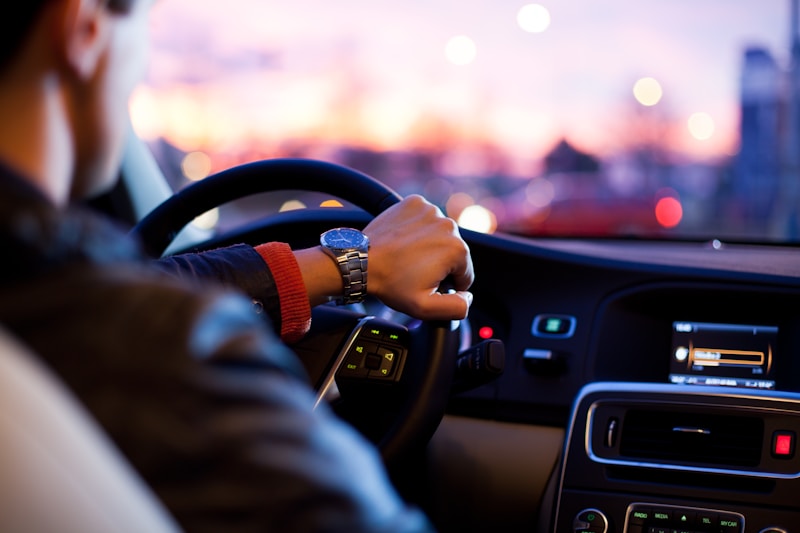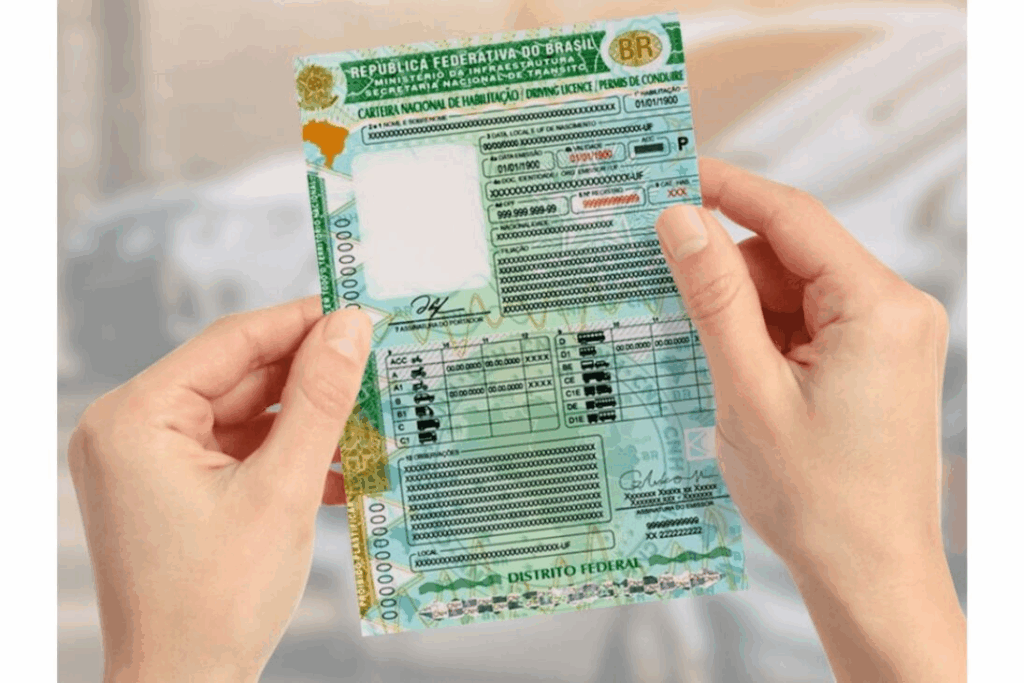Anúncios
Getting Your Driver’s License in Brazil: Free Options and Complete Guide

Download CNH Digital App

Obtaining a driver’s license in Brazil, known as the CNH (Carteira Nacional de Habilitação), is a significant milestone for many Brazilians.
Whether you’re a resident or planning to stay long-term, understanding the process and knowing about free or subsidized options can save you considerable money and stress. The good news is that there are legitimate pathways to get your driver’s license without breaking the bank, and in some cases, completely free of charge.
Anúncios
The traditional process of getting a CNH can be expensive, with costs ranging from R$2,000 to R$4,000 depending on the state and driving school. However, various government programs and social initiatives exist to make this essential document accessible to low-income individuals. Let’s explore everything you need to know about obtaining your Brazilian driver’s license, including the free options available. 🚗
Understanding the Brazilian Driver’s License System
Brazil’s driver’s license system is regulated federally by DENATRAN (Departamento Nacional de Trânsito) but administered at the state level by DETRANs (Departamento Estadual de Trânsito). The CNH is divided into different categories based on the type of vehicle you intend to drive, from motorcycles to commercial trucks.
Anúncios
The standard categories include Category A (motorcycles), Category B (cars up to 3,500 kg), Category C (light trucks), Category D (passenger vehicles), and Category E (vehicles with trailers). Most first-time applicants pursue either Category A, B, or AB (combined motorcycle and car license).
Who Qualifies for a Free Driver’s License in Brazil? 🎯
Several Brazilian states offer programs specifically designed to provide free or heavily subsidized driver’s licenses to economically vulnerable populations. The eligibility criteria typically include:
- Registration in CadÚnico: Being enrolled in the federal government’s Cadastro Único para Programas Sociais (Unified Registry for Social Programs) is often a primary requirement.
- Income requirements: Most programs target families earning up to half a minimum wage per person or up to three minimum wages total.
- Age requirements: Applicants must be at least 18 years old.
- Literacy: You must be able to read and write in Portuguese.
- State residency: You need to prove residency in the state where you’re applying.
- No previous CNH: These programs are typically for first-time license applicants only.
Government Programs Offering Free Driver’s Licenses
Different Brazilian states have implemented various social programs to democratize access to driver’s licenses. These initiatives recognize that having a CNH can significantly improve employment opportunities and quality of life for low-income citizens.
CNH Social and CNH Popular Programs 💳
The most common free driver’s license programs are known as “CNH Social” or “CNH Popular,” though the specific name varies by state. São Paulo, Rio de Janeiro, Minas Gerais, Bahia, Pernambuco, and many other states have versions of these programs.
These initiatives typically cover all mandatory costs including medical and psychological examinations, theoretical classes, practical driving lessons, and examination fees. The government partners with accredited driving schools (CFCs – Centros de Formação de Condutores) to deliver the training.
In São Paulo, for example, the “CNH Popular” program has helped thousands of residents obtain their licenses completely free. The state government covers approximately R$2,500 per student, which includes the entire process from enrollment to the final practical exam.
How to Apply for Free Driver’s License Programs 📝
The application process varies by state, but generally follows these steps:
- Check program availability: Visit your state’s DETRAN website or contact them directly to confirm if a free CNH program is currently open for registration.
- Verify eligibility: Ensure you meet all the requirements, particularly CadÚnico registration and income limits.
- Gather documentation: Prepare your RG (identity card), CPF (tax identification), proof of residence, and CadÚnico documentation.
- Submit application: Applications are typically submitted online through the state DETRAN portal or in person at designated locations.
- Wait for selection: Most programs use a lottery system or first-come-first-served basis due to limited spots.
- Attend orientation: If selected, attend the mandatory orientation session to understand the process and requirements.
The Complete Standard Process to Obtain a CNH
Whether you’re going through a free program or paying independently, the process to obtain a Brazilian driver’s license follows the same regulated steps. Understanding this process helps you prepare adequately and know what to expect. ✅
Step 1: Initial Registration and Medical Examinations
The first step involves registering at a DETRAN-accredited driving school (CFC) or directly at DETRAN, depending on your state’s procedures. You’ll need to present your identification documents and undergo medical and psychological evaluations.
The medical exam verifies your physical fitness to drive, including vision, hearing, and motor coordination tests. The psychological assessment evaluates your emotional stability, attention capacity, and reaction time. Both evaluations must be performed by professionals certified by DETRAN.
Step 2: Theoretical Course and Examination 📚
After passing the medical evaluations, you’ll attend the mandatory theoretical course, which consists of 45 hours of classroom instruction covering:
- Traffic legislation and regulations
- Defensive driving techniques
- First aid procedures
- Environmental protection and citizenship
- Vehicle mechanics basics
Upon completing the theoretical course, you’ll take the written exam containing 30 multiple-choice questions. You must correctly answer at least 21 questions (70%) to pass. The exam covers all subjects taught during the course, with specific minimum scores required in traffic legislation and first aid sections.
Step 3: Practical Driving Lessons 🚙
Once you pass the theoretical exam, you move on to practical driving instruction. The law requires a minimum of 20 hours of practical lessons for Category B (cars), distributed as follows:
- 4 hours of daytime driving lessons
- 15 hours of regular practical driving
- 1 hour of nighttime driving
For Category A (motorcycles), 20 hours of practical lessons are also required, with specific exercises including balance, slalom, and emergency braking. If you’re pursuing Category AB, you’ll need to complete the requirements for both categories.
During these lessons, instructors teach essential skills including vehicle control, parking maneuvers, lane changes, intersection navigation, and defensive driving techniques in real traffic conditions.
Step 4: The Practical Driving Examination
The final hurdle is the practical driving test, conducted by a DETRAN examiner. For Category B, the exam typically lasts 25-30 minutes and includes various maneuvers in a controlled area and open traffic:
- Vehicle safety checks before departure
- Starting on an incline without rolling back
- Parallel parking or garage parking
- Three-point turn or Y-turn
- Driving in urban traffic following all regulations
Examiners evaluate your vehicle control, observance of traffic laws, safety awareness, and overall driving competence. You can accumulate up to 3 points in minor faults, but certain serious errors result in automatic failure, such as causing accidents, running red lights, or losing vehicle control.
Costs Involved in Getting a Driver’s License (When Not Free)
For those who don’t qualify for free programs or prefer independent enrollment, understanding the cost breakdown helps with financial planning. Prices vary significantly between states and cities. 💰
| Service | Approximate Cost (R$) |
|---|---|
| Medical and Psychological Exams | 150 – 300 |
| Driving School Registration | 100 – 200 |
| Theoretical Course | 300 – 500 |
| Theoretical Exam Fee | 50 – 100 |
| Practical Lessons (20 hours) | 800 – 1,500 |
| Practical Exam Fee | 100 – 200 |
| License Issuance | 150 – 250 |
| Total Average | 1,650 – 3,050 |
Additional costs may include retaking exams if you fail (theoretical or practical), extra driving lessons beyond the minimum required, and administrative fees. Some driving schools offer package deals that can reduce overall costs.
Tips to Successfully Obtain Your CNH on the First Try
Whether you’re going through a free program or paying for the process, these strategies increase your chances of success and help you avoid the time and expense of retaking exams. 🎓
For the Theoretical Exam
Study consistently throughout the course rather than cramming before the exam. Use online practice tests available on DETRAN websites and mobile apps. Focus particularly on traffic signs, right-of-way rules, and first aid procedures, as these are heavily tested. Join study groups with classmates to discuss challenging topics and quiz each other.
Pay attention during classes and take detailed notes. Instructors often emphasize the most commonly tested material. Many students underestimate the theoretical exam, but it has a failure rate of around 20-30% nationally.
For the Practical Exam
Practice outside of mandatory lessons if possible, either with a licensed driver in a private vehicle or by purchasing additional lessons. Familiarize yourself with the test route and common examination locations if allowed. On exam day, arrive early, stay calm, and demonstrate confident but cautious driving.
During the exam, verbalize your safety checks (mirrors, blind spots) so the examiner knows you’re being thorough. Follow speed limits precisely, use turn signals consistently, and maintain proper following distances. Remember that examiners are looking for safe, defensive driving rather than perfect performance.
The Digital CNH Revolution 📱
Brazil has modernized its driver’s license system with the introduction of the CNH Digital (Digital Driver’s License), a legally valid electronic version of the physical document. Since 2018, all Brazilian drivers can download and use the official CNH Digital app, eliminating the need to carry the physical card in many situations.
The digital version contains all information from your physical license plus additional security features including QR codes and biometric validation. It’s accepted by all law enforcement agencies and is particularly convenient for daily use. The app also provides access to your driving record, infraction history, and permit renewal information.
How to Activate Your CNH Digital
Download the official “Carteira Digital de Trânsito” app from Google Play Store or Apple App Store. Create an account using your CPF and follow the verification process. You’ll need to validate your identity through the gov.br platform, Brazil’s unified government services portal. Once verified, your digital CNH becomes immediately available and legally equivalent to the physical version.
Renewing and Maintaining Your Driver’s License
Brazilian driver’s licenses require periodic renewal. New drivers receive licenses valid for 10 years (if under 50 years old), 5 years (ages 50-70), or 3 years (over 70). The renewal process involves new medical and psychological examinations but no retaking of driving tests unless your license has expired for more than 5 years. ⏰
Maintaining a clean driving record is crucial. Brazil uses a point system where traffic violations add points to your license. Accumulating 20 points within 12 months (or 40 points for drivers with no serious infractions) results in license suspension. Serious violations like drunk driving or causing accidents with injuries can lead to immediate suspension or revocation.
Special Considerations for Foreign Residents
Foreign residents in Brazil face different rules depending on their visa status and country of origin. Tourists can drive using their home country license plus an International Driving Permit (IDP) for up to 180 days. Temporary or permanent residents must obtain a Brazilian CNH.
Citizens from countries with reciprocity agreements (including most European nations, Canada, and several South American countries) can exchange their licenses directly without taking Brazilian exams. Others must complete the full CNH process, though some states may offer abbreviated courses for experienced drivers.
Understanding Common Challenges and How to Overcome Them
Many aspiring drivers face obstacles during the licensing process. The practical exam has a national failure rate of approximately 40%, making it the most challenging step. Common failure reasons include inadequate observation of surroundings, poor parking execution, stalling the vehicle, and traffic law violations during the test. 😰
To overcome exam anxiety, practice relaxation techniques, get adequate sleep before the test, and maintain a positive mindset. Remember that failing doesn’t mean you’re a bad driver—it simply means you need more practice. Most successful drivers failed at least one exam before passing.
Financial constraints represent another significant challenge, which is precisely why free CNH programs are so valuable. If you don’t qualify for these programs, consider payment plans offered by many driving schools, or save gradually while using the time to study traffic regulations independently.
The Impact of Having a Driver’s License on Employment Opportunities
Possessing a CNH significantly expands employment possibilities in Brazil. Many positions, even those not primarily involving driving, require a valid driver’s license. Delivery services, sales representatives, field technicians, and countless other roles mandate this qualification. 💼
For low-income individuals, this employment barrier is precisely what free CNH programs aim to eliminate. Studies show that program participants experience employment rate increases of 30-40% within six months of obtaining their licenses. The economic impact extends beyond individual benefit, contributing to overall workforce mobility and economic development.
Regional Variations in CNH Programs Across Brazil
Each Brazilian state administers its driver’s licensing system independently, leading to variations in procedures, costs, and program availability. States like São Paulo, Rio de Janeiro, and Minas Gerais have well-established free CNH programs with annual funding and clear application processes.
Smaller or less economically developed states may offer these programs sporadically, depending on budget availability. Some northeastern states have partnered with federal job training programs (like PRONATEC) to integrate driver’s license training with professional qualification courses, creating comprehensive pathways out of poverty.
Before beginning the process, research your specific state’s DETRAN website thoroughly or visit in person to understand current programs, requirements, and timelines.
Making the Most of Your New Driver’s License 🚗✨
Once you’ve successfully obtained your CNH, whether through free programs or traditional means, you’re not just gaining a document—you’re gaining independence, expanded career opportunities, and greater personal mobility. New drivers should continue developing their skills through gradual exposure to different driving conditions, from urban congestion to highway travel.
Consider additional defensive driving courses, which many insurance companies reward with discounts. Stay informed about traffic law changes through DETRAN communications and news sources. Join online communities of new drivers to share experiences, ask questions, and continue learning from more experienced motorists.
Respect traffic laws not just to avoid fines but to protect yourself and others. Brazilian traffic fatality rates remain concerningly high, and responsible driving from all license holders is essential to improving road safety nationwide.

Resources and Next Steps for Aspiring Drivers
Your journey to obtaining a Brazilian driver’s license begins with information gathering and preparation. Visit your state DETRAN website to check current programs, requirements, and application procedures. If free CNH programs are available, verify eligibility requirements and application deadlines immediately, as spots fill quickly. 📋
For those who don’t qualify for free programs, compare driving schools in your area, reading reviews and asking about payment options. Many schools offer free introductory visits where you can inspect facilities, meet instructors, and ask questions before committing.
Download the CNH Digital app now to familiarize yourself with the interface and explore its features. Even before obtaining your license, the app provides valuable information about the licensing process and traffic regulations.
Contact social assistance offices in your municipality to confirm your CadÚnico registration status if you believe you might qualify for free programs. Ensuring this registration is current and accurate can open doors to numerous social benefits beyond driver’s licensing.
Remember that obtaining your CNH is an investment in your future. Whether achieved through free government programs designed to promote social equality or through traditional paid routes, this qualification represents a significant step toward greater personal and professional opportunities.
The process requires dedication, study, and practice, but the rewards—independence, employability, and confidence—make every effort worthwhile. Start your journey today, and soon you’ll be navigating Brazilian roads with your hard-earned Carteira Nacional de Habilitação in hand! 🎉






